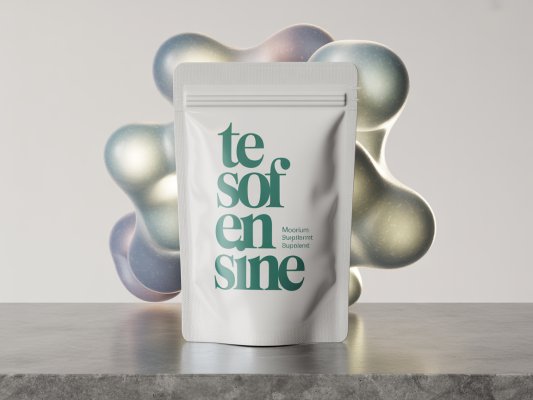
Tesofensine
Description
Tesofensine is a triple monoamine reuptake inhibitor initially explored for neurodegenerative conditions but now recognized for its significant weight loss potential. This article provides a comprehensive yet accessible overview of Tesofensine, covering its mechanisms, benefits, potential side effects, and current research status, empowering you to make informed decisions. We'll explore how this drug impacts appetite, metabolism, and even brain activity, offering a complete picture of its potential role in weight management.
Quick Overview: Tesofensine At-a-Glance
- Key Benefit(s): Significant weight loss, especially in obese individuals, by suppressing appetite and potentially increasing energy expenditure.
- Primary Mechanism: Inhibits the reuptake of dopamine, norepinephrine, and serotonin in the brain, affecting mood, appetite, and metabolism.
- Best For: Individuals struggling with obesity, particularly those who haven't achieved sufficient results with diet and exercise alone.
- Typical Dose Range: 0.25 mg to 1 mg daily, with 0.5 mg often cited as an effective dose.
- Key Caution/Consideration: Potential for side effects such as dry mouth, nausea, and insomnia; further research is needed to determine long-term safety.
Table of Contents
Categories & Effectiveness
Learn about our rating methodologyBrain Health
Dopamine Support
4/10Moderate evidence of effectiveness
Serotonin Support
4/10Moderate evidence of effectiveness
Mood & Stress
Wellbeing Boost
4/10Moderate evidence of effectiveness
Physical Performance
Appetite Regulation
7/10Strong evidence of effectiveness
Fat Metabolism
7/10Strong evidence of effectiveness
Dosage & Side Effects
Recommended Dosage
Potential Side Effects
Bioavailability & Half-Life
Interactions & Stacks
Recommended Products
MoleQlar Omega 3 90 Kapseln - hochdosiert mit 1000mg Qualitäts-Fischöl pro Kapsel - 2250mg DHA/EPA pro Portion - Triglyceridform - frei von Pestiziden & Schwermetallen
- Rated 4.9 stars by 33 customers
- Premium quality ingredients
Moller’s ® | Lebertran Kapseln | Omega-3-Fettsäuren DHA & EPA, Enthält Vitamin A, D & E, Unterstützt Immunsystem, Herzfunktion, Gehirnfunktion & Sehkraft | 160 Stück
- Rated 4.7 stars by 2,484 customers
- Special offer: 25 % Rabatt auf deine erste Abonnement-Bestellung
Omega 3-400 Kapseln 1+ Jahr Vorrat-1000mg Fischöl pro Tag - Essentielle Omega 3 Fettsäuren mit EPA & DHA - Für Herz, Gehirn & Blutdruck (EFSA) - Natürliches Fisch Öl aus Sardellen - WeightWorld
- Rated 4.6 stars by 1,880 customers
- Premium quality ingredients
As an Amazon Associate we earn from qualifying purchases. Prices and availability are accurate as of the date/time indicated and are subject to change.
Benefits by Use Case
Significant Weight Loss
Demonstrated in clinical trials, leading to substantial reductions in body weight, especially in obese individuals. The weight loss effect is believed to be a combination of appetite suppression and increased energy expenditure, though the latter requires further research.
Reduced Visceral Fat
Studies indicate that Tesofensine is effective in reducing visceral fat, particularly in the mesenteric region, which is associated with various metabolic health risks. This reduction in visceral fat contributes to improved overall body composition and health.
Mechanism of Action
Frequently Asked Questions
Where to Buy Tesofensine
Based on quality, price, and customer reviews, here are our top recommended Tesofensine supplements:
Premium Multivitamin – 180 hochdosierte Komplex-Kapseln – wertvolle Vitamine A-Z – Premium-Rohstoffe – mit Bioaktiv-Formen – ohne unnötige Zusätze – in Deutschland produziert & laborgeprüft
- Rated 4.5 stars by 7,644 customers
- Premium quality ingredients
Health & Her Perimenopause - mit 800mg Rotklee, 500mg Yamswurzel, Eisen, Vitamin D3, B6 und B12, Maca-Extrakt für eine bessere Hormonbalance in den frühen Wechseljahren - Menopause 60 Kapseln
- Rated 4.3 stars by 2,689 customers
- Premium quality ingredients
Moller’s ® | Lebertran Kapseln | Omega-3-Fettsäuren DHA & EPA, Enthält Vitamin A, D & E, Unterstützt Immunsystem, Herzfunktion, Gehirnfunktion & Sehkraft | 160 Stück
- Rated 4.7 stars by 2,484 customers
- Special offer: 25 % Rabatt auf deine erste Abonnement-Bestellung
As an Amazon Associate we earn from qualifying purchases. Prices and availability are accurate as of the date/time indicated and are subject to change.
Summary & Expert Opinion
Its key strengths include the potential for significant weight loss, particularly in individuals with obesity, a very long half-life supporting convenient once-daily dosing, and good oral bioavailability. However, limitations include potential side effects such as insomnia, the possibility of drug interactions (especially with CYP3A4 inhibitors), and some animal data suggesting tolerance to its appetite-suppressing effects over time, even if weight loss continues.
Based on current research, Tesofensine might be considered by individuals struggling with obesity who are seeking pharmacological support for weight management, always under the guidance of a healthcare professional.
It should likely be avoided by individuals with known hypersensitivity to similar compounds, those taking strong CYP3A4 inhibitors without medical consultation, and potentially by individuals with severe renal impairment, particularly females, due to increased drug exposure. As with any investigational drug, pregnant or breastfeeding women should avoid use.









